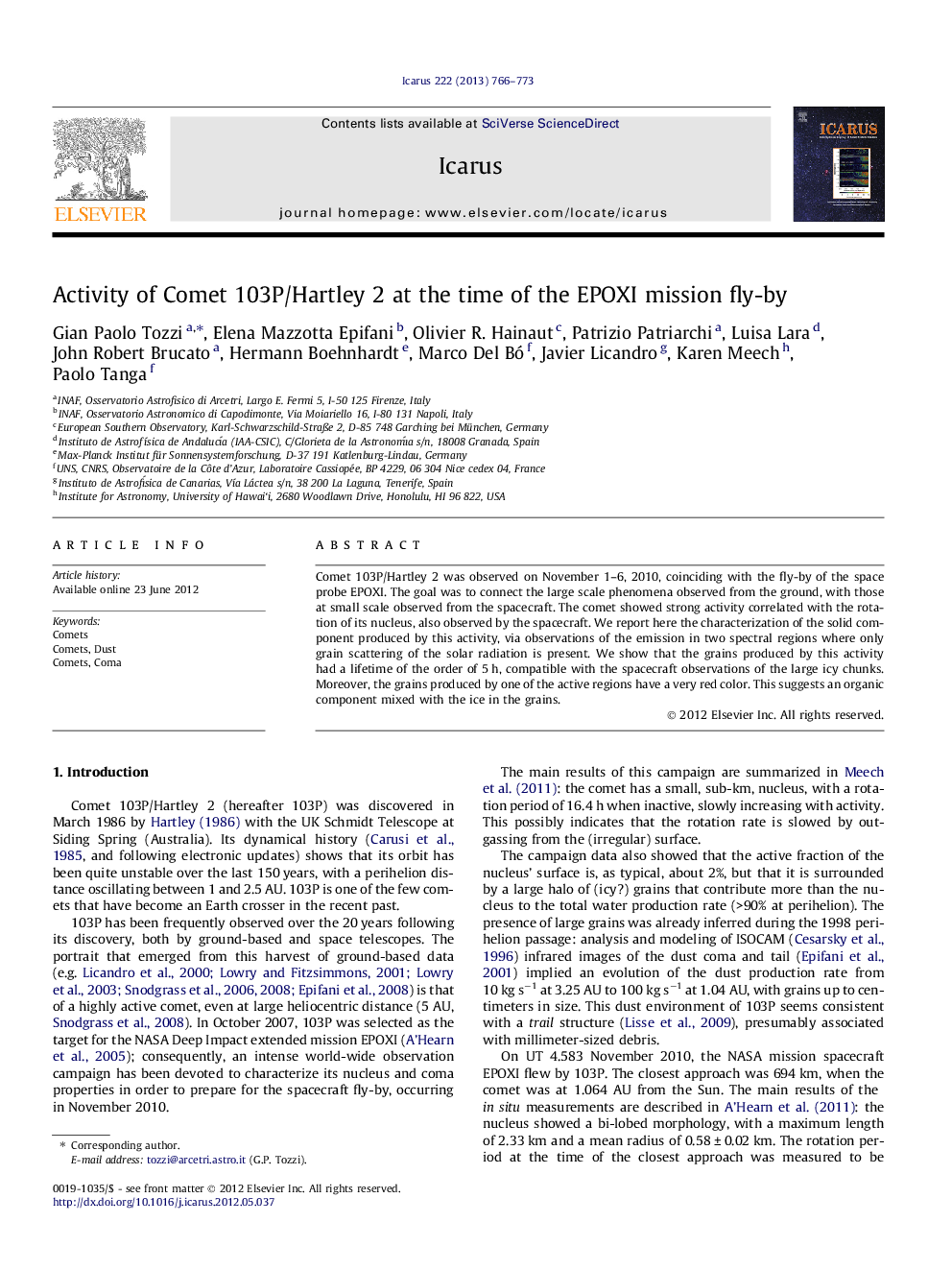| Article ID | Journal | Published Year | Pages | File Type |
|---|---|---|---|---|
| 1773337 | Icarus | 2013 | 8 Pages |
Comet 103P/Hartley 2 was observed on November 1–6, 2010, coinciding with the fly-by of the space probe EPOXI. The goal was to connect the large scale phenomena observed from the ground, with those at small scale observed from the spacecraft. The comet showed strong activity correlated with the rotation of its nucleus, also observed by the spacecraft. We report here the characterization of the solid component produced by this activity, via observations of the emission in two spectral regions where only grain scattering of the solar radiation is present. We show that the grains produced by this activity had a lifetime of the order of 5 h, compatible with the spacecraft observations of the large icy chunks. Moreover, the grains produced by one of the active regions have a very red color. This suggests an organic component mixed with the ice in the grains.
► The periodic activity of 103P/Hartley 2 was analyzed using ground-based imaging. ► Grains are emitted by the nucleus preferentially along two separate directions. ► The grains have a relatively slow projected velocity, of the order of 20 m s−1. ► They vanish with a lifetime of the order of 5 h, suggesting they sublimate away.
